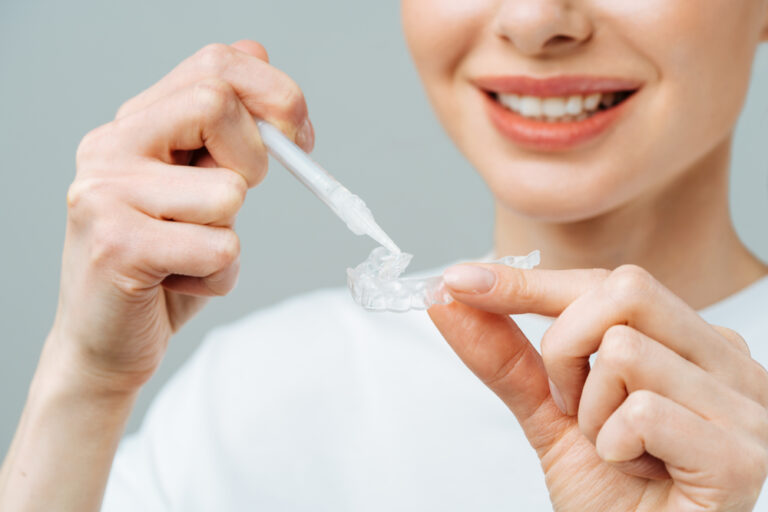Why does the bottom of my front tooth feel jagged?
It’s very common for the bottom edges of front teeth to develop a rough or jagged feeling over time. There are several potential causes:
Enamel wear
Enamel is the hard, outer layer that covers the entire tooth. It serves to protect the softer, inner tooth tissue called dentin. Enamel is actually the hardest substance in the human body. However, it is still vulnerable to wearing down over many years of chewing, biting, and eating abrasive foods. This wearing down occurs at the biting edges of the front teeth in particular, since those teeth sustain the most force during eating. As enamel gradually erodes, it exposes more of the underneath dentin surface. Dentin has a much softer texture, which creates a rougher, almost jagged feeling along the tooth edge.
Root exposure
The tooth root lies below the enamel and dentin layers. It extends into the jawbone to provide stability and support for the tooth. As gums naturally recede with age, the root becomes less protected. More of the root surface gets exposed near the gumline. Tooth roots have tiny microscopic ridges and channels that make them rougher than enamel. Increased root exposure around the gumline is another reason front teeth may feel uneven or sharp around the edges.
Cracks
Tiny cracks in the enamel surface are very common, especially in adult teeth. Enamel is prone to developing these micro-fractures that gradually worsen over time. Additional pressure from clenching or grinding teeth speeds up the cracking process. Fractured enamel acquires sharp, serrated edges and grooves that you can detect by running your tongue over the biting surface. It feels like little peaks, valleys and pits. Chewing also pushes food debris into the cracks, further accentuating the uneven texture.
Cavities
Dental cavities that form along the gumline cause deterioration and loss of enamel and dentin as the decay process advances. Cavities create holes, pits, and gaps in the usually smooth biting surface. Decay also undermines the enamel, causing weak spots that fracture easily under pressure. All of these factors make the tooth edge feel quite rough and irregular as you slide your tongue over it.
What makes front teeth more susceptible?
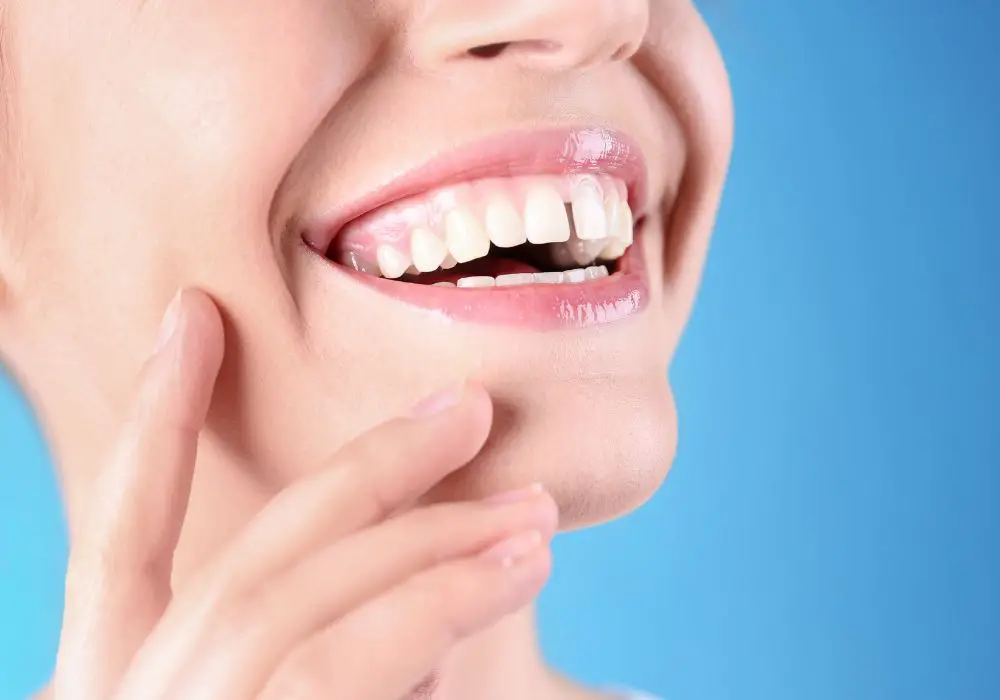
There are several reasons that front teeth are especially vulnerable to enamel loss, cracks, and decay that lead to jagged biting edges:
- Thinner enamel – Enamel is thinnest at the edges of front teeth where most of the biting force is concentrated. Thinner enamel wears down faster. The backs of teeth have much thicker protective enamel.
- Exposed roots – Gum recession tends to start in the front of the mouth and on the lower teeth. This exposes more root surface with its rough, uneven texture near the gumline.
- Cracks – Front teeth have relatively long, thin roots that provide less stability in the jawbone. They are more prone to micro-fractures and cracks than other teeth with shorter, sturdier roots.
- Cavities – The smooth, polished enamel right near the gumline is more vulnerable to plaque accumulation and decay. Front teeth develop more cavities in these at-risk zones.
- Wear – The incisors and canines perform the majority of biting and chewing forces, so they take the brunt of wear over many years. Eventually, they develop rough, pitted areas.
Problems caused by jagged edges
Rough, cracked edges on front teeth can lead to other issues beyond just discomfort:
- Tooth sensitivity – As enamel wears away, more of the underlying dentin is exposed. Dentin has microscopic tubules that convey hot, cold, and pressure sensations, making the tooth painfully sensitive.
- Cavities – The cracked, pitted enamel traps more food debris and makes it harder to keep teeth clean. This allows more cavity-causing bacteria to adhere to the uneven surface.
- Gum recession – Jagged edges create friction against the gums during chewing. This can inflame the gums and cause them to gradually recede.
- Chipped teeth – Pre-existing cracked enamel is even more likely to fracture off as a tooth chip or break. Chipping exposes dentin and can lead to pulp infections.
- TMJ problems – The uneven biting edges throw off your alignment and put more strain on the temporomandibular joint as the jaws shift to compensate. This aggravates TMJ and jaw muscle pain.
- Speech issues – In cases of severe enamel loss and fracturing, the front teeth can’t form words properly. Speech may become slurred or lispy.
- Tooth loss – If enough enamel wears away, the tooth eventually needs extraction since the remaining structure is too fragile.
When to see a dentist
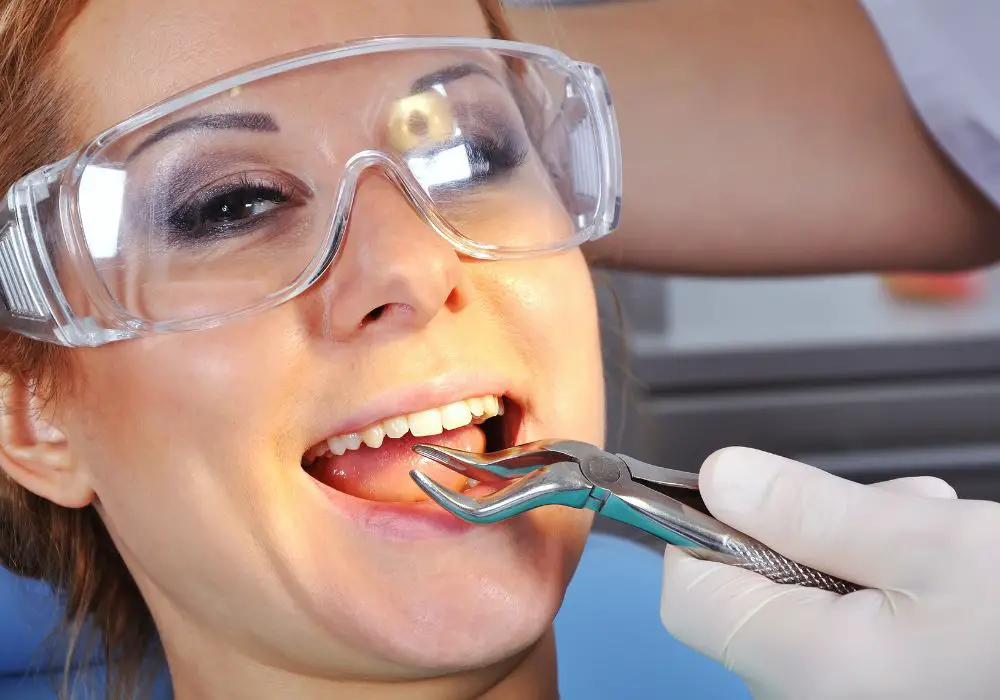
You should make an appointment right away if you notice any of the following warning signs:
- New areas of roughness, sharpness or jagged edges along your front teeth
- Increased sensitivity, especially when eating or drinking hot or cold foods
- Visible cavities, holes or dark spots near the gumline of front teeth
- Gum recession that has worsened around front teeth
- Discomfort or difficulty biting or chewing because of uneven edges
In general, it’s ideal to have your dentist evaluate any enamel wear, cracks, or decay as early as possible. Minor problems are simpler to treat and restore before substantial enamel loss occurs. An exam every 6 months allows your dentist to monitor conditions and recommend options. If you suddenly notice a new jagged area or crack, get evaluated promptly to prevent additional damage.
Diagnosis at the dental appointment
During your appointment, your dentist will first perform a visual inspection of your front teeth, looking closely for:
- Signs of thinning or sheer loss of enamel surface
- Yellowish-colored dentin exposure along the biting edges and gumline
- Pitting, grooving, fracturing or chipping along the biting edges
- Amount of noticeable root area due to receding gums
- Discoloration that might indicate dental decay
They will also use a dental instrument called a probe. This lets them feel for subtle roughness or ridges beneath your gums and along the root surfaces. Your dentist will evaluate your overall bite alignment and may have you bite down on a strip of paper to check for unevenness. Additional diagnostic tests might include:
- Radiographs – X-ray images help detect underlying cracks, decay between teeth, and damage extending into the roots.
- Study models – Your dentist may take impressions of your teeth to create plaster models. These are analyzed to find patterns of enamel loss.
- Cold sensitivity testing – Your dentist may direct cold air or ice onto different areas of your teeth to pinpoint zones of sensitivity.
- Transillumination – A specialized light instrument helps disclose tiny cracks in the enamel.
Treatment options
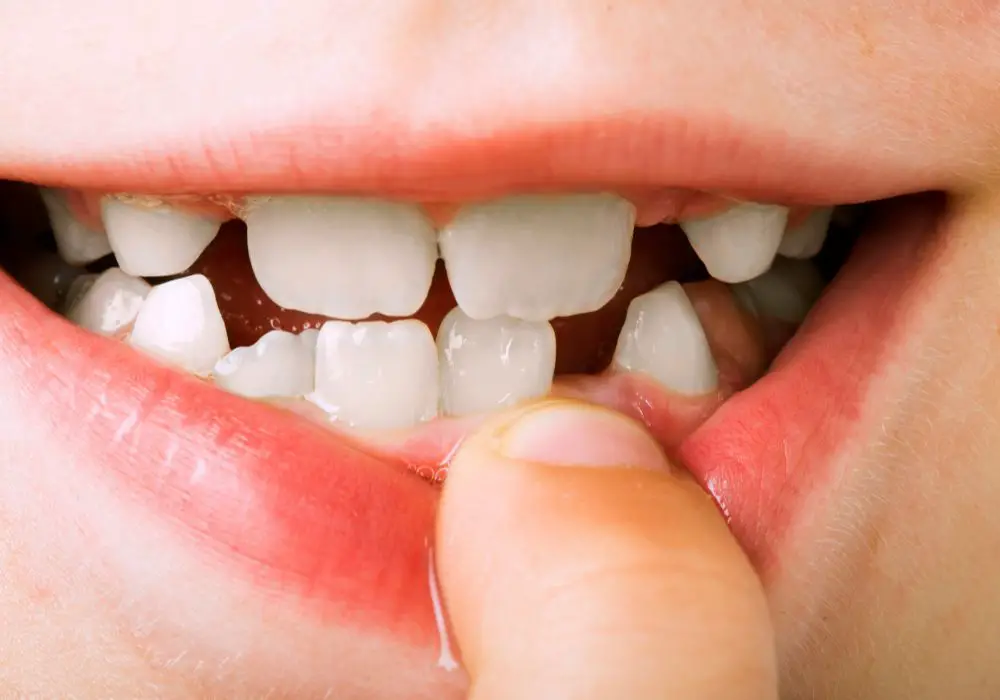
Based on the diagnosis, your dentist will recommend options to restore smoothness and function. Treatments range from minor enamel shaping to more complex restorations:
Minor enamel irregularities:
- Teeth whitening – Bleaching strips or gels can make minor roughness less noticeable by removing stains.
- Enameloplasty – Your dentist uses a small handpiece to precisely reshape and smooth over any sharp ridges or peaks along the enamel.
- Dental bonding – Tooth-colored composite resin is applied to small defects in the enamel. It hardens into a smooth, sealed surface.
Moderate cracking, chipping, decay:
- Crowns – Damaged areas are reduced in size and covered with a porcelain or ceramic crown restoration to recreate the normal tooth shape and function.
- Veneers – Thin laminate shells are bonded onto the front surface of teeth to cover chips, cracks, and unevenness.
Substantial enamel loss:
- Gum grafts – Grafted gum tissue is placed over exposed root areas to protect them from further wear and sensitivity.
- Root canals – If decay extends deep enough to infect the pulp, you’ll need a root canal procedure to save the tooth.
- Extractions – In cases of extreme damage, removing the tooth may be necessary before replacing it with a dental implant, bridge, or removable partial denture.
Caring for teeth with jagged edges
Along with professional treatment, you can prevent accelerated wear and cracks of vulnerable front teeth:
- Use a soft-bristled toothbrush – This puts less mechanical stress on already weakened enamel. Alternate brushing motion to avoid abrasion.
- Avoid chewing ice or other hard foods – Minimize crunching hard foods, candy, bones, popcorn kernels that can fracture teeth.
- Drink plenty of water – Stay hydrated and avoid frequent acidic drinks that erode enamel like soda, sports drinks, and juice.
- Wear a nightguard if you grind teeth – Ask your dentist for a custom nightguard to protect against microscopic cracking from grinding or clenching.
- Get regular dental cleanings – Professional cleanings every 6 months prevent buildup that leads to decay in enamel defects.
Why front teeth feel jagged: Key takeaways
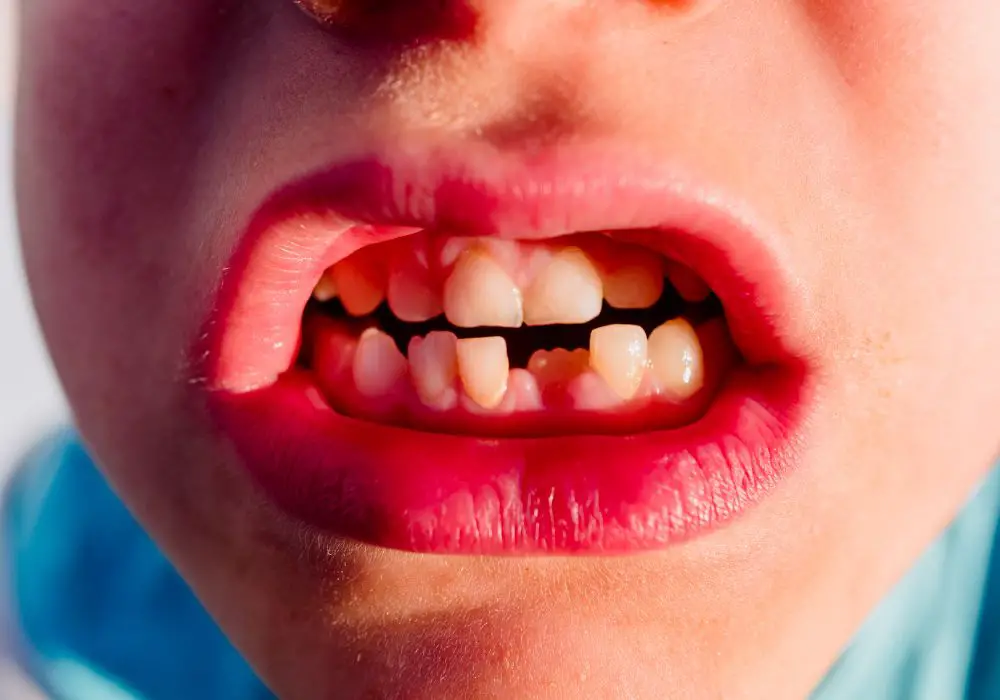
- Front teeth often develop discomforting rough spots and jagged edges due to years of enamel wear, cracks, and/or decay near the gumline.
- Thinner enamel, gum recession, and instability make front teeth especially prone to chipping, fractures, and uneven worn areas.
- See your dentist right away if your front teeth become sharp, cracked, or hypersensitive to address the cause before substantial damage occurs.
- Treatments can range from minimally invasive reshaping to crowns or veneers for moderate defects. Severely worn teeth may need grafts, root canals or extraction.
- Prevent worsening of existing roughness by using soft toothbrushes, avoiding hard foods, staying hydrated, and wearing a nightguard if you grind.
Frequently Asked Questions
Why do my front teeth feel jagged but my back ones don’t?
Front teeth sustain the most force during biting and chewing. So they tend to develop cracks, wear, and defects sooner than back teeth, which have the benefit of thicker enamel and see less direct impact. Gum recession also usually starts in the front of the mouth, exposing rougher root surfaces along the gumline. So while back teeth eventually exhibit some wear too, the front ones feel it first.
Can jagged edges cut my tongue or inner cheeks?
In some cases, severely fractured, worn, or broken front teeth can form sharp edges and points. If exaggerated enough, these can potentially irritate and slightly cut the tongue, lips or inner cheek area when eating and talking. Any tooth with an edge sharp enough to shred cheek tissue or snag your tongue should be immediately examined and smoothed by your dentist to prevent soft tissue injuries.
Do jagged front teeth automatically mean I grind my teeth?
Jagged or uneven edges on front teeth can be an indication of nighttime teeth grinding (bruxism). Grinding erodes enamel and also microscopically cracks teeth over the years. If your dentist notices excessive unexplained wear on front teeth, ask about having a night guard made to protect them from further damage while you sleep. The guard cushions and distributes force from grinding to avoid cracked teeth.
Is it safe to just file my teeth smooth myself at home?
You should never attempt to file down or grind away rough areas on your own teeth at home. This could quickly remove way too much irreplaceable enamel and expose sensitive dentin. Only a dentist has the specialized tools, expertise, and precision needed to selectively reshape teeth and create an even biting surface. Home filing risks making the problem worse and causing further damage to your teeth.
Why did my teeth get sharp edges after having braces?
It’s fairly common for teeth to take on a rough feeling along the edges following orthodontic treatment with braces. The constant friction of bracket edges pressing against teeth over months or years can microscopically crack and scratch the enamel. Stay diligent about wearing your retainer as directed after braces removal. See your dentist right away if any teeth feel jagged so they can polish and restore a glassy smooth enamel surface.





